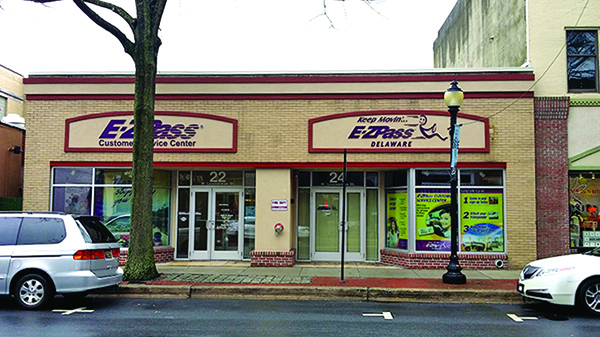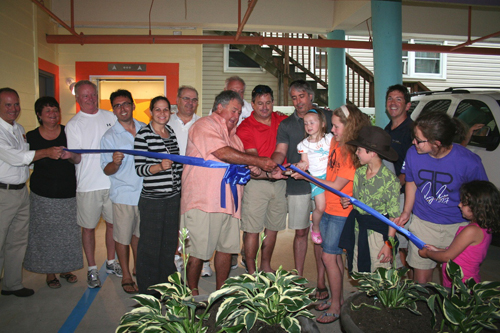Hydraulic VRC helps repurpose restaurant building into government-service facility.
A vertical reciprocating conveyor (VRC) to move materials to and from the basement storage area was central to an adaptive reuse project that converted a former restaurant building in downtown Dover, DE, into a new location for the Delaware E-ZPass Customer Service Center and Division of Motor Vehicles Call Center.
The process of transforming more than 10,000 sq. ft. of space from a restaurant to a government-service facility was all encompassing. In addition to an overhauled layout, new furnishings, and the requisite code upgrades, storage for an ample supply of electronic toll transponder boxes, office products, and customer paperwork was required.
Upgrading space in the antiquated basement was the obvious storage solution, but the rickety stairs were an inadequate and non-compliant means of access. In an effort to find a safe, reliable, and economic solution, the project general contractor, Whiting-Turner Contracting, Newark, DE, called Delaware Elevator of Salisbury, MD.
“The space in the basement was pretty tight, so we knew the best solution would be something mechanically simple, easy to install, and low maintenance,” said P.J. Laviola, DE special applications manager.
“After completing our site study and determining the relatively low number of payloads E-ZPass required, we recommended a PFlow Series D hydraulic VRC (vertical reciprocating conveyor) as the ideal option.” Manufacturer PFlow Industries Inc. is headquartered in Milwaukee.
Whiting Turner and Delaware Elevator then collaborated with E-ZPass to find the optimal spot for the through-floor VRC, agreeing to a location against the back wall away from customer traffic.
PFlow Series D hydraulic VRCs are designed for loads to 3,000 lb., and provide carriage platform dimensions to 6 x 6 ft. and vertical rises to 15 ft.
Hydraulic lifts are also better for tight spaces, with no overhead clearance needed for the motor and mechanicals, as is typically required for larger VRC models. This also provides an advantage for maintenance and code compliance.
“With hydraulic lifts you can position the pump and controller wherever you want, so you can work on it at knee level rather than having to climb a ladder to access the mechanicals,” said Bo McShane, Delaware Elevator site supervisor who managed the E-ZPass installation. “And you can avoid the OSHA-approved safety and accessibility add-ons like stairs, catwalks, and handrails that are often required with lifts where the primary mechanicals are at the top.”
In addition, VRCs have their own national code (ASME B20.1), and are specifically exempt from the national elevator code; people are not allowed to be transported on them.
The E-ZPass Series D lift is a cantilevered-frame design, with all structural elements attached to one basement wall, forming an L-shaped configuration with the lift carriage.
The hydraulic pump and controller are stack-mounted adjacent to the lift, with a flexible hose connected to the two 2-in. ram direct-acting hydraulic cylinders that lower and raise the lift.
The hydraulic lift includes safety features to protect workers and materials, such as:
- access gates installed at each level with interlocks that sync with the movement and position of the lift carriage
- velocity fuses to prevent uncontrolled carriage descent in the unlikely event of a hydraulic hose rupture situation
- a pressure switch to prevent the carriage from drifting or sinking to ensure smooth, safe loading and unloading
- a remote-mounted control panel.
“The lift was installed and fully tested in only three days. We prefer to work with PFlow because there are never any surprises when the lift components arrive on site,” Laviola said.
The facility, which opened in March 2014, employs 85 people and serves 1,000 people a month. Regarded as the most extensive economic development project in Dover in many years, the project brings a steady flow of people to the site, benefiting area merchants and helping fuel growth downtown.
on November 23, 2015 in Building Technology, Featured





